On the evening of October 18th, black clouds of starlings wheeled overhead as the NationSwell team made its way to meet a group of partners and leaders in downtown Tulsa. The group had gathered as part of our Place-Based Impact Collaborative for an immersive, 1.5-day experience designed to explore how community-centered investment and strategic partnerships are working in concert to give new strength to Tulsa.
The insights and best practices we gathered from GKFF’s approach — and from the experts in attendance — were many, and can better enable communities nationwide to thrive. Although it’s impossible to accurately capture and convey the profound experience of being on the ground in Tulsa, our hope is that this piece can shed some light on what it was like to come together and learn with an incredible group of leaders and inspire you as you strengthen your own community-centered, place-based work.
Day One
The day began with a tour at Greenwood Rising to hear the vital stories at the core of Tulsa’s history and identity: the impact the Trail of Tears, the systems of anti-Blackness that fomented the Race Massacre of 1921, and the cultural reverberations of both eras that are still being felt throughout the city. Despite the violence dotting its past, Tulsa and its residents have persisted — deepening their sense of community and establishing a rich sense of place and culture that makes the city vibrant and unique.
That night, we joined our hosts from George Kaiser Family Foundation for a welcome reception at a speakeasy in the city’s Deco District. After an evening of warm conversation, introductions, and getting to know one another better as we prepared for the next day, Aaron Miller — head of partnerships at inTulsa — announced that he would lead a group by bus to celebrate the city’s popular Oktoberfest, currently in its 44th year. Jonathan Pride, executive director at NPower, announced that he planned to lead a competing group to the same location via the city’s widely-available Lime scooters.
Day Two
East Tulsa
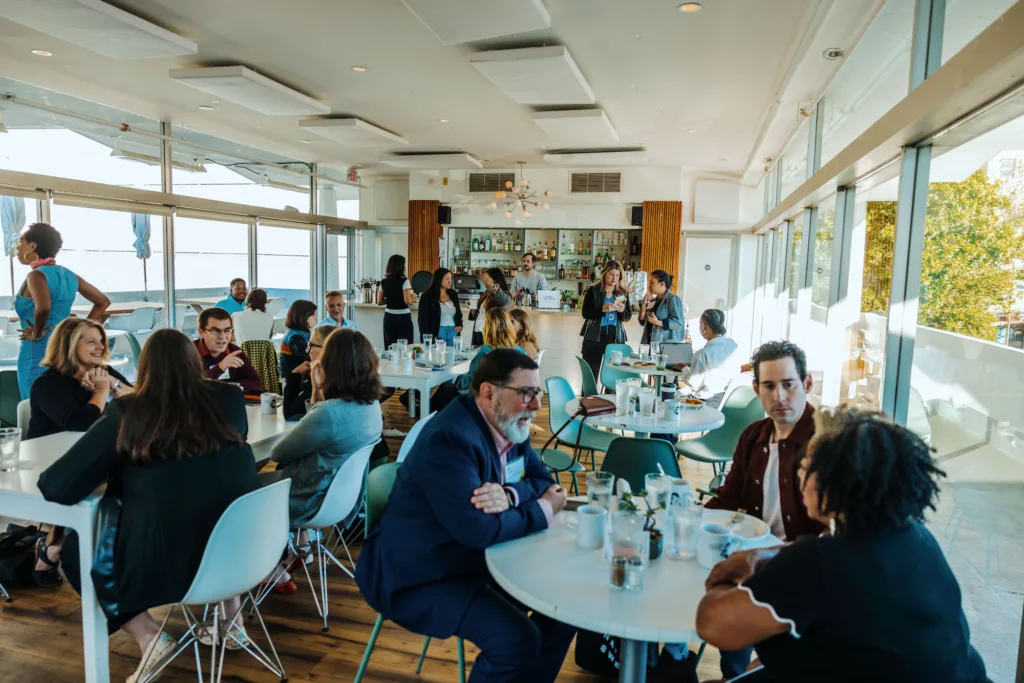
After a quick pit stop for breakfast on Thursday morning, our group set out by bus for East Tulsa, where white flight and the attendant infrastructural divestment have created unlikely opportunities for the city’s growing immigrant population.
Cynthia Jasso — a program officer on the Vibrant and Inclusive Tulsa team — explained that East Tulsa has become a community hub, learning center, and worker community for newly-arrived immigrants, more than 1,100 of whom arrive at the Plaza Santa Cecilia from Mexico by bus each week. While organizations like Growing Together have done grassroots outreach to meet residents where they are — helping to expand access to vaccines and make PPP loan applications easier for local businesses owners — they ultimately found that there was an overwhelming need for a centralized community hub where people could get the help that they needed. Plaza Santa Cecilia has become that epicenter — a place for the community to gather, relax, take classes, shop, or even acquire permits.
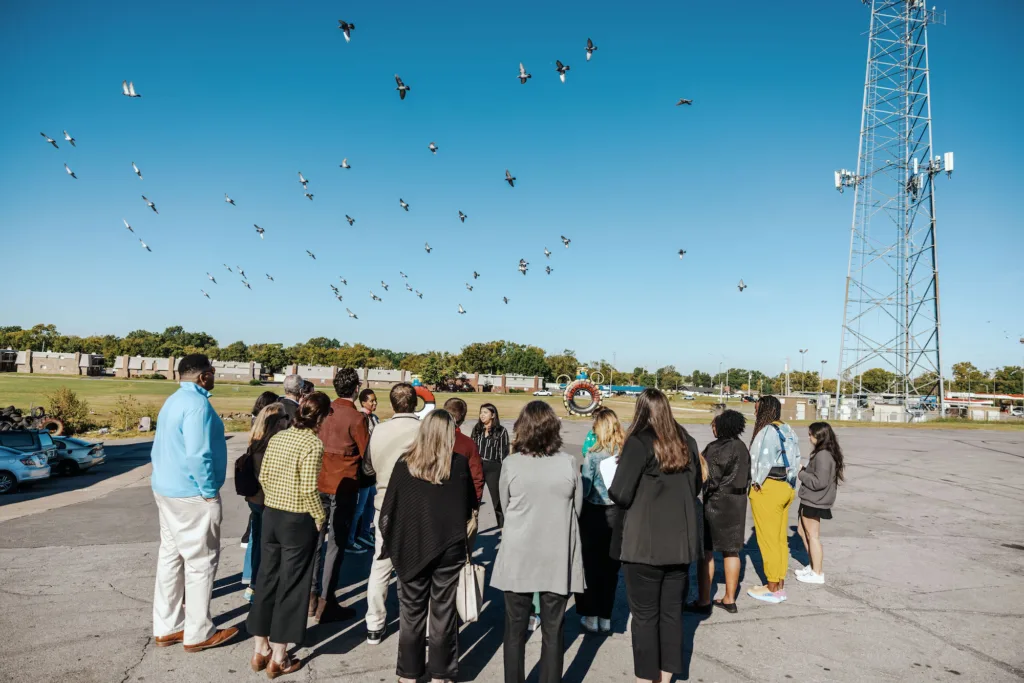
The plaza features beautiful murals, restaurants, and a nightclub, and has become a major source of community pride and belonging — a critical metric of success for place-based investment.
North Tulsa

Our next stop was in North Tulsa, where attendees heard from Pastor Philip Abode of Crossover Community Impact and Crossover Bible Church. A former University of Tulsa football player and current high school football coach, Abode’s passion for coaching youth eventually catalyzed an even deeper relationship to mentorship in the city: he now serves as executive director of Crossover Preparatory Academy, which oversees several private middle schools throughout the city.
A majority-Black neighborhood, Tulsa’s north corridor is currently the site of major community development efforts, including a planned 500-unit, mixed-income housing project and new contracts with high-quality, high-paying manufacturing jobs at companies that agree to recruit from within the neighborhood (and nearby Tulsa Technology Center).
Kendall Whittier
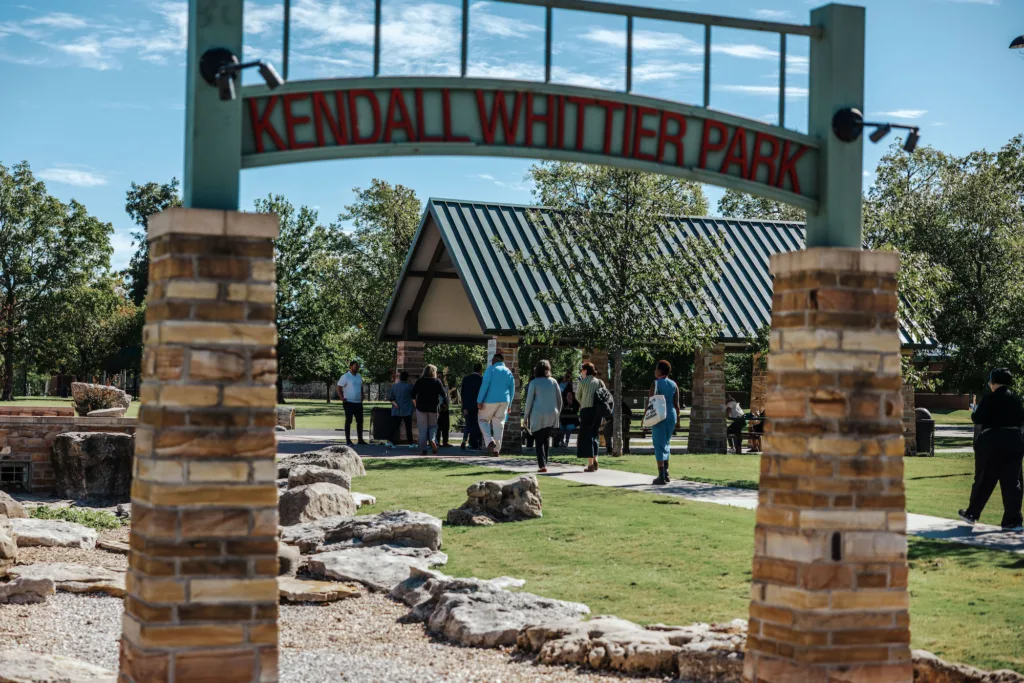
As the bright sun continued to warm up the day, we visited Kendall Whittier Park — located in Tulsa’s historic Kendall Whittier neighborhood — where we learned more about how a mixed-income neighborhood trust has helped provide stable, affordable housing, and how partners like Growing Together and Tulsa Educare have created educational opportunities and green spaces where children and families can grow and thrive.
We also had the opportunity to tour The Gathering Place, which words alone don’t really do justice. A sprawling 66.5-acre green space nestled against the Arkansas River, The Gathering Place’s pathways were dotted with pumpkins and its playgrounds had names like “Land of the River Giants,” “Fairyland Forest,” and “Volcanoville.” All park activities are free, and guests can help themselves to kayaks and paddle boats, attend concerts on the lawn, and engage with the park’s many educational programs.

After lunch, we reconvened at Greenwood Cultural Center for a series of panel discussions — first on how to leverage the power of storytelling, and then on how new models of collaboration across the public, private, and philanthropic sectors can help to foster opportunity from the ground up.
During the first panel, Jasmine Dellafosse — Director of Organizing and Community Engagement at EPIC — spoke about the value of telling the stories that run counter to our assumptions.
“What are the stories we don’t know, and in whose interest is it that we don’t know them?” she asked.
Panelist Vanessa Garrison — Co-founder and COO of GirlTrek — further emphasized the power storytelling holds in developing a community: deconstructing myths, challenging assumptions and enabling community members to lead change.
In the second panel, a key insight that surfaced was the recognition that change doesn’t just take a longer grant cycle but can take generations to actualize. The question that emerges, then, is how do we integrate intergenerational change as a metric when measuring impact?
At the intersection of both of these panels is the emerging understanding that how we measure impact in place-based philanthropy needs to evolve to incorporate more qualitative data, compelling us to reimagine what a thriving community really means.
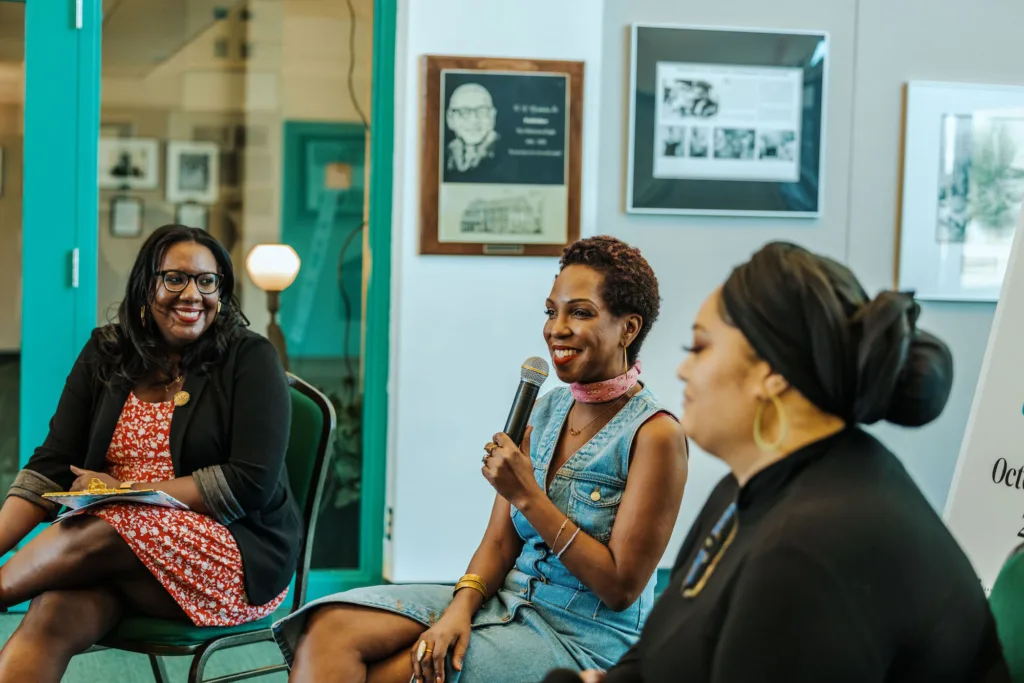
After a visit to Archer Studios to learn about the Tulsa Artist Fellowship — and a ceramics activity with fellow Raphael Corzo — participants had a few minutes to rest and recharge before coming together for a NationSwell Signature Dinner to reflect on the events and learnings of the day.
Hosting us for the evening was the team at et al., a collective of chefs working collaboratively to “build a more delicious and equitable future for the food and beverage industry in Tulsa.” Aptly named to reflect the important but often overlooked or unknown people who help to make an ambitious vision into a reality, the symbolism behind et al.’s name and mission had a beautiful symmetry with the focus of our visit to Tulsa — and the patchwork of organizations and solutions we’d witnessed firsthand on the ground there.
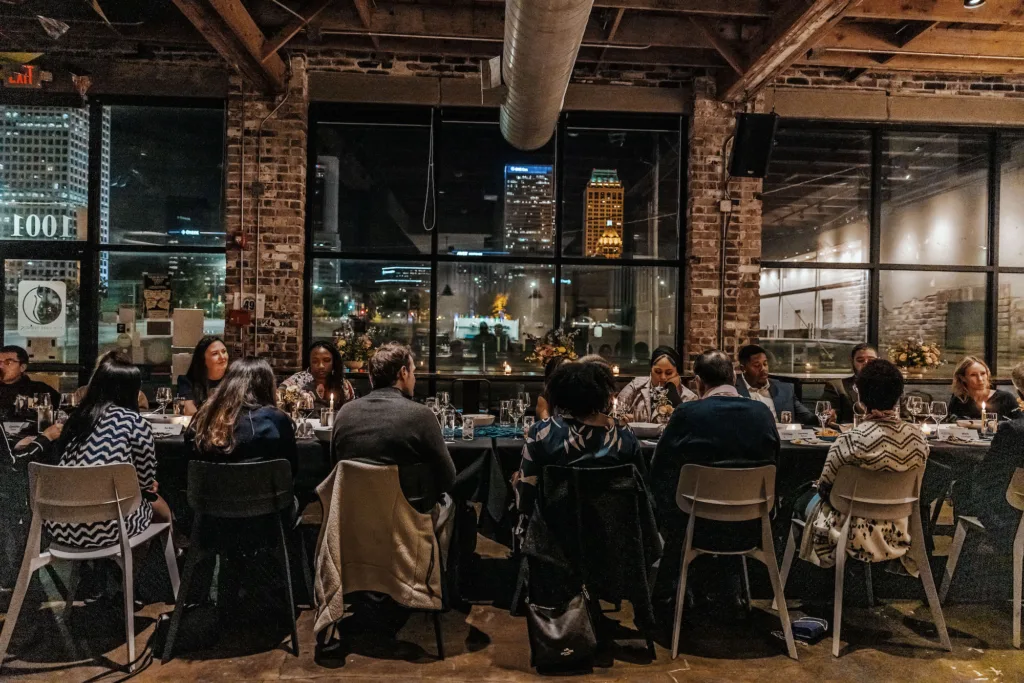
Attendees dove deep into what had inspired and moved them during the course of the meal, which was themed around the idea of breaking bread (as chef Colin Sato explained, “You have now broken bread with Tulsa, and now it’s a part of you”). There was a discussion of some of the central challenges to their own place-based work, with members laying out the approaches, tools, and new opportunities for partnership they were excited to bring back to their own communities.
Like the chefs in et al.’s culinary collective, our time in Tulsa was distinguished by the patchwork of seemingly disparate, often undersung voices we heard from joining together to create a beautiful and undeniable chorus of solutions. While partners on the ground maintain different focuses in the work that they do and the neighborhoods they serve, everything in Tulsa has a certain harmony to it; the work comes together to hum like a well-oiled machine. As we packed up to leave on Friday, we couldn’t help but think about how this model of community impact — where every voice, program, and initiative happening on the ground is truly greater than the sum of its parts — has the potential to transform not only communities, but the world.
We’re so excited to have plans for more in-person, immersive experiences in the works for the near future. This incredible experience was part of our Place-Based Impact Collaborative. Our Collaborative model is based on the idea that the challenges we face call for collaboration and shared action to achieve the impact we seek on a variety of issue areas. Together, with cross-sector leaders, we illuminate challenges and opportunities in the space and align on action to advance each other’s work, and the field as a whole.
We encourage you to read more about our different Collaboratives and to contact us to get involved if you see one that resonates with you and your work.
NationSwell Collaboratives are a new initiative convening cross-sector leaders to work in new ways on major issues affecting our lives, our nation, and our world. Learn more about our current offerings here.

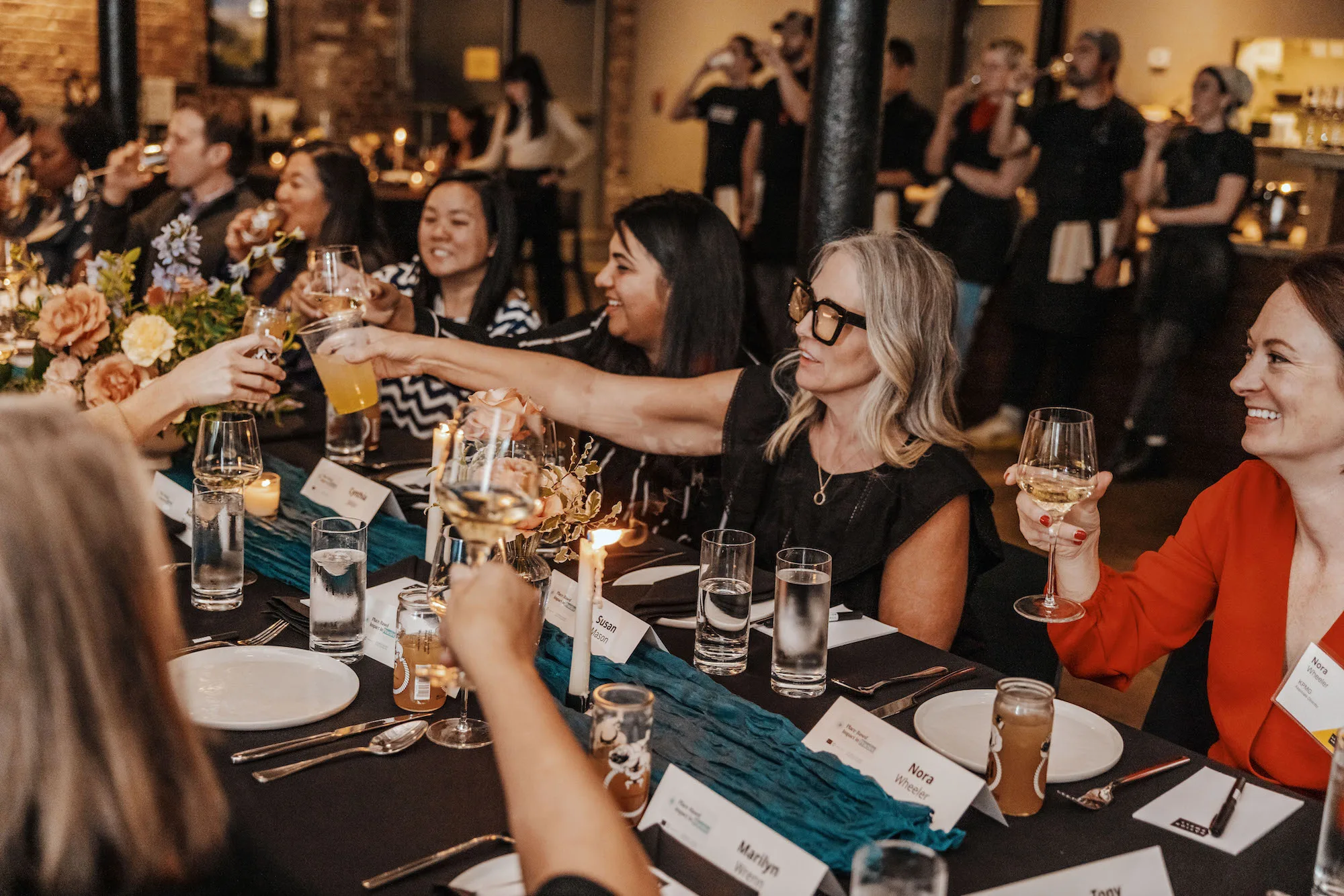 "
"